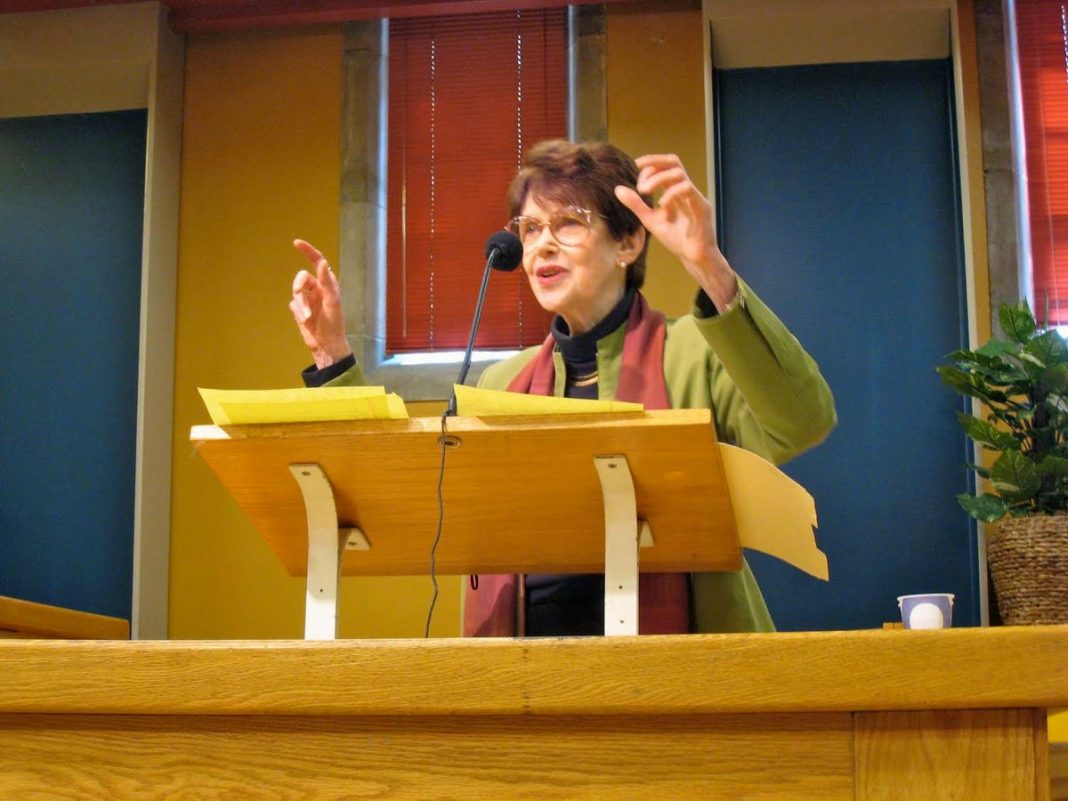Riane Eisler, JD, PhD(h), President, Center for Partnership Systems and Editor in Chief, … [+]
Center for Partnership Studies
Imagine a world where men and women equally share power. Consider what’s possible in a time and place where male domination and violence aren’t embedded in culture. Based on The Chalice and the Blade: Our History, Our Future, a best-selling book by the prolific systems scientist and historian, Dr. Riane Eisler, such an era existed 5,000 years ago for 20,000 years. However men in leadership positions deliberately erased this social construct from history. Eisler has filled in the gaps of missing data. You could say she’s an expert at doing this.
According to this work, for millennia human societies were built on what Eisler calls “Partnership Systems,” in which human capacity to nurture and sustain life was held in the highest regard, and shared responsibility was the gold standard. As the president of the Center for Partnership Studies, Eisler is promoting the Partnerism Movement to make partnership systems that reward caring for one another and nature.
Investing In Human Infrastructure
Eisler says that to build an economy rooted in partnerism, one of the first aspects of society that need to be addressed is the way we collectively view infrastructure. While investing in sustainability, social impact initiatives, and programs that support underrepresented and under-funded groups is noble and of value, the underlying systems that these facets of society operate on need to fundamentally shift, as well.
“We’re used to thinking of human infrastructure as bridges and roads because business can’t function without them,” she shares. “But in my book, The Real Wealth of Nations: Creating a Caring Economics, I point out that we also couldn’t function without our natural infrastructure, nature, community volunteers, and of course we couldn’t function without the household infrastructure. This is the air we breathe and the food we eat. They come from nature. Human infrastructure is what supports human development, human surviving and human thriving. Not paying attention to these three ignored sectors in conventional economics has caused a lot of suffering and dysfunction in our post industrial era.”
Indeed. Healthy human development requires food, water, education, medical care, infrastructure, and economic opportunity. Without nurturing families and our natural world, having these critical needs is not possible.
Changing How We Measure Prosperity
A contributing factor to lack of support for human infrastructure is that the GDP fails to include care work done in households, even though it would make up 20% to 50% if it were included. That’s not the only flaw with GDP. From a human well-being standpoint, GDP doesn’t measure well-being well, as it counts for perceivably good events and bad events. When a natural disaster destroys a location, GDP increases. When someone dies and the body is brought to a funeral home, GDP rises. GDP makes no adjustments for leisure time, home production, black market activity, the distribution of goods (if a ruler gets 90% of the goods, while the rest of the country barely gets by), or the cost of pollution.
That’s why Eisler and an international team of economists and academics are collaborating with the Center for Partnership Studies to develop the Social Welfare Index (SWI), a comprehensive metric of the economic value of the work of caring for people and nature. Once again, aligning with the same mission The Chalice and the Blade—to close the gap around missing data— the goal of the SWI is to support policies that increase social justice and cultivate an equitable society.
Intersecting With Technology
To ensure her work is brought into mainstream conversations, Eisler wants to see it reach evolving technologies, including AI.
“Hopefully, we’ll be convening with some AI representatives, as well as other technology experts to present this frame and to ask them a very simple question, ‘how would you program AI and other technologies if you were to use a partnership frame rather than domination frame?’” she shares. “The number one way to do that is to pay attention to families. Because in domination it’s not coincidental that regimes that are very authoritarian focus on preserving or maintaining an authoritarian rigidly male highly punitive family.”
Expanding Our Narratives & Language
The family construct flows into several facets of how society operates, including our narratives and language. Eisler also wants to see our stories and our words adjusted to promote and reflect partnerism.
Regarding the possibility of the world adopting partnerism language, Eisler says, “Our language is so limiting. Think of matriarchy and patriarchy. There are really two sides of a domination coin, right? Either mother’s rule or father’s rule. There is no partnership alternative.”
In an era where people are striving for equality—and by that I mean today—having a partnership alternative in our language, our stories, our technology, our households, our government and our economics shouldn’t simply be an option. My thoughts are that it should be the gold standard. Equal means more than equal rights. It means shared responsibility, and caring and nurturing for the people and the environment making partnership possible. That’s a world that dare I say most of us want to live in. How fortuitous are we that Eisler has created a blueprint for us to create it?




